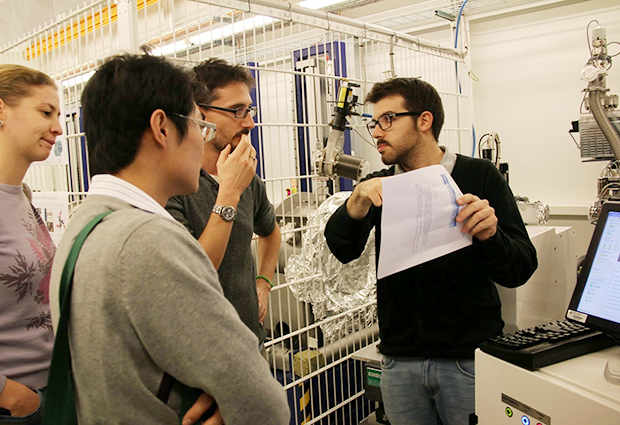
On a SAXS quest
Over the past few years, Small Angle X-ray Scattering (SAXS) has grown rapidly in popularity as a powerful tool for bio-molecular structure determination. In an attempt to meet the increasing demand, the SAXS group at EMBL Hamburg, led by Dmitri Svergun, hold regular courses and workshops across the globe, but the biennial EMBO Practical Course on Solution Scattering from Biological Macromolecules held at EMBL Hamburg remains the course to attend in the quest for optimal SAXS data.

Organised by Dmitri Svergun, Maxim Pethoukov, Rob Meijers and Al Kikhney, the seventh iteration of the hands-on course ran from 27 October to 3 November, attracting 27 participants and almost 20 speakers and tutors from around the world to Hamburg. This year was somewhat unusual due to the shutdown of the PETRA III ring at the German Electron Synchrotron (DESY) and hence the unavailability of the EMBL BioSAXS beamline P12 to conduct measurements – nevertheless, attendees enjoyed an action-packed eight days of lectures, hands-on computer tutorials, beamline visits and work in the biophysical lab.

Some of the participants shared SAXS data collected elsewhere, while others analysed experimental SAXS data from ‘alien’ proteins (recorded at beamline P12 before the shutdown). Advances during the lectures and practicals were accompanied by participants’ adventures through SAXS Quest: a web-based computer ‘game’ guiding players through the levels of SAXS data analysis. Students teamed up into groups, and Quest results and alien-hunting successes – that is, the ability to extract as much as possible from the SAXS data of unknown proteins – were summarised at the final session. The teams with the best scores and presentations received ‘SAXSy’ awards with a Hamburg flair.
“This year, the course ran for the first time at the EMBL building in PETRA III, so the lecture hall, coffee room and experimental facilities were very close to each other. Thanks to the unusually nice weather, the top-floor terrace could be used during the coffee breaks contributing to the stimulating atmosphere of the course,” says Svergun. “The hard work of all members of the BioSAXS group, admin colleagues and Sample Preperation and Characterisation team at EMBL Hamburg combined to make the course a success. The speakers and the students made an excellent crowd, prompting very lively discussions, and we were extremely happy to have them here.”
Attendees not only learnt a lot about the process of SAXS measurement and analysis, but gratefully embraced the opportunity to exchange ideas with experts and new friends. Their feedback was very positive, as was that of the invited speakers and tutors: “I am very thankful to be a part of the team around these inspiring courses,” wrote one speaker, “It is at the same time a wonderful opportunity to discuss science and meet up with friends and colleagues!” The organisers are now looking forward to planning the next course in 2016 – this time with the BioSAXS beamline running at full power.



